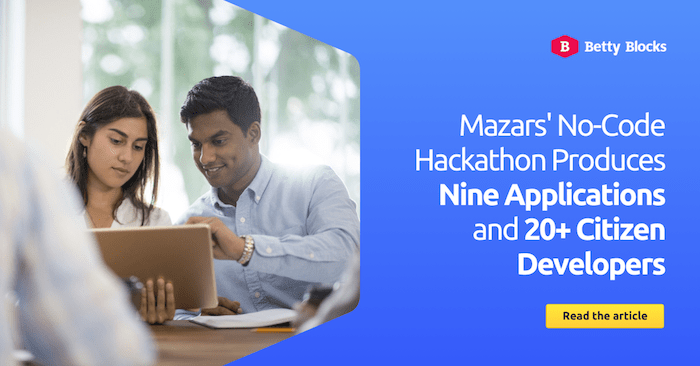
By Chris Obdam, Founder & CEO, Betty Blocks.
How can a law firm or in-house department scale business capabilities and capitalize on market opportunities? What is necessary to optimize client support, and establish new revenue streams? Increasingly, industry leaders are leveraging legal tech within their innovation strategies to tackle their challenges, stay competitive, and future-proof their organizations.
Innovation, however, is about more than onboarding new legal tech. Aside from this shift in the ways of working, innovation involves a crucial shift in mindset and culture.
Think of it this way: you want to start encouraging your family to start cycling to school and work. You know this will take more than just purchasing a bike. Instead, to implement cycling as a new habit, you need the proper tools and right motivations and mindset. This starts with selecting fitting bikes and helmets, and making sure your family has the ability and feels comfortable using both. On top of this there has to be a well-maintained and connected infrastructure of cycle paths in your area. Lastly your family needs to understand and be convinced of the benefits of cycling rather than driving. Once the habit is implemented you need to keep maintaining the bicycles to keep guaranteeing safe and enjoyable rides. This is how you should think about your innovation strategy.
A successful innovation strategy is built on a foundation of the right culture and mindset, and put into motion with the right legal tech tools. There are various components that go into establishing a innovation culture:
Scheduling and prioritizing innovation
Here is something we all know from personal experience: when we don’t make time in our schedule for a new hobby or habit we never get to it. The same goes for businesses. When innovation projects are expected to happen on top of everyday workloads they end up on a backlog. Instead innovation needs to be properly scheduled and prioritized.
Thus, law firms and in-house departments must make innovation strategies and projects a non-negotiable priority. To achieve this every level of the organization must become evangelists and supporters of the innovation projects. The business has to understand the goals and benefits of the projects, and believe in the value of the investment.
Once properly valued and prioritized, innovation projects should be officially scheduled into work weeks. Time and capacity must be dedicated to innovation projects. Whether this looks like one day per week, or 20% of a team’s capacity, formal commitments must be made to innovation for it to actually happen.
Ideation and agile mindsets
Innovation means looking at existing or current systems and situations, client and organizational needs, and market trends and identifying the issues or opportunities for change and improvement. This is a problem-solving mindset, and is a skill that has to be taught to an organization.
A problem-solving mindset starts with the ability to look past the symptoms of a problem and identify its root cause. From here, employees need the skills to conceptualize the potential, and right, solutions to the problems. To train this, organizations can run ideation workshops or innovation days. Additionally, tools like an Ideation Portal encourage employees to volunteer new ideas and solutions, place votes, and provide one another with feedback. This tool also enables you to capture ideas immediately at the right time, maintaining the momentum and timing of the idea.
By teaching innovation mindsets to employees, organizations gather inspiration and ideas from those who are most knowledgeable about the business and its needs; the business itself. Meanwhile, given the tools to identify their problems and think of solutions, the business starts driving innovation. With this the management-led approach of prioritizing and scheduling is met with an employee-driven push to innovate.
A system of support
A successful innovation culture must be underpinned with a strong system of support. This means that employees have to be provided with a foundation of training, guidance, best practices, and available resources. As a result employees are fully equipped and supported to carry out innovation projects.
To establish this support system organizations regularly create Innovation or Legal Tech teams responsible for facilitating the entire process. We regularly refer to this as a Center of Excellence (CoE), a team responsible for the training, support, documentation, and project management involved in a legal tech solution. An in-house CoE enables your organization to independently empower, train, and support innovators in the business, and becomes a key structural component of innovation.
This support system does not only come into play when a new Legal Tech solution is first introduced, but should continually underpin innovation projects. This could look like creating an online environment or Knowledge Center complete with all the necessary resources. Alternatively organizations can establish regular workshops or collaborative sessions, and have office hours available to all employees. Meanwhile, places where employees can exchange questions and ideas, such as online forums or innovation hours, are also crucial. Through this innovation projects become fully structured, supported, collective, organization-wide initiatives.
Collaboration and fun
When something becomes a requirement, people generally stop enjoying taking part in it. It is thus crucial that an innovation culture is one which is voluntary and positive, based on collaboration and fun.
True innovation is about a collective drive and collaborative effort towards improvement and change. Innovation projects should bring together people from various departments with different types of expertise and skill into collaborative processes. This way projects build on the existing strength of the people within an organization, and create alignment between different teams.
Events such as Innovation days, Project competitions, or Hackathons are fun and collaborative events that capture the essence of innovation as a positive initiative which is executed together.
The right Legal Tech solution: a tool and a partner
A truly successful innovation strategy combines an innovation culture with the right Legal Tech solution. Here too firms and legal departments must be specific and critical – selecting technology providers that truly map onto their needs. Not only this, but firms should look for Legal Tech providers that not only offer a solution, but also a partner in innovation.
The right Legal Tech provider provides the guidance, best practices, and support to facilitate proper and successful implementation of a tool. This is a continuous partnership, where providers continue to supply updated materials and documentation.
With the innovation culture and mindset in place, an organization will receive the right legal tech tool with open arms, and accelerate towards innovation.
Here’s an approach to get you started: gather your team or employees with an innovative mindset from throughout your organization. Get everyone to spend 10 minutes writing down innovation ideas in a collective document. There is no right or wrong here – just get started and run with it. With this document you already have a first hub of innovation ideas that can be validated and might eventually become game changers within your organization. This is the power of the right culture and mindset.
Curious to know how Mazars in Germany created 10+ business applications and a scalable, rapid application development pipeline? By implementing no-code as an innovation technology and mindset. Check out their journey here:

[ Artificial Lawyer is proud to bring you this sponsored thought leadership article by Betty Blocks. ]